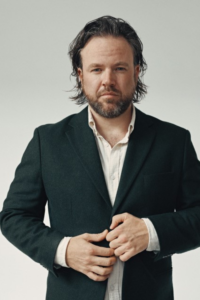No sane human would ever argue that Sergei Rachmaninoff is not one of the Immortals, but in one way he’s more immortal than most: the Russian pianist and composer had the good fortune to exist after the invention of reliable audio-recording technology, and before the dawn of the ubiquitous selfie. To put it another way, when it comes to the many works Rachmaninoff composed with the piano at their centre, we know exactly how he meant them to sound—and at the same time we’re not burdened by knowing exactly what he had for breakfast on any given Monday morning.
The recordings that Rachmaninoff—who died in 1943—left behind are undeniably treasures, and many of them boast surprisingly good fidelity for their era. We strongly advise seeking them out, whether on LP, CD, or in video form on YouTube; they leave an invaluable record of the composer’s intent.
That’s advice that the Victoria-born pianist Lorraine Min has little interest in following, however. She’s familiar with Rachmaninoff’s recording of the Rhapsody on a Theme of Paganini, made with Leopold Stokowski and the Philadelphia Orchestra on December 24, 1934, but she does not intend to take it as her sole guide. One reason for that, she explains, is that “the style of playing in those days was remarkably different.
“I won’t speak for this one because I haven’t very recently heard his particular recording of it,” Min continues, “but I don’t actually put too much weight in that regard on composers that play their own pieces. Speaking for myself, whenever I’ve written little bits, like cadenzas, it’s not quite the same. Sometimes I think you’re so comfortable because you wrote it that you don’t really put the same care and attention into performing. That can certainly be said for some historical recordings of other great composer-pianists. The difference here, of course, is that Rachmaninoff was a very fine concert pianist. In fact, when he fled Russia he actually had to slow down his composing career in order to support his family as a pianist. So when he wrote the Rhapsody, it was during a time when his composing life had slowed down a lot. He hadn’t had much success with his fourth piano concerto, soi think he was quite surprised by the success of this composition. So that part is wonderful, but I wouldn’t say that, for me, that recording wasn’t what triggered my very personal interest in Rachmaninoff, the pianist.”
Min’s admiration extends to Rachmaninoff’s skill as an interpreter. “One of my favourite recordings of the Chopin second sonata, the ‘Funeral March’ sonata, is Rachmaninoff playing it, so there you go,” she says. “For me, that recording is among the very best I’ve heard; I still hear it in my head as I’m speaking to you. There, he’s playing a different composer, and he’s amazing.
“But’s a very interesting topic,” the pianist continues. “It’s kind of like ‘interpreter versus composer’; what do they bring to the music? But for me, I go directly to the score, and with all the things I’ve learned over the decades from all the fine teachers I’ve had and all the great classes that I’ve taken. You know, you’ve already got this great wealth of musical knowledge in your mind and your soul—and if I listen to recordings it’s usually after I have developed my own connection to the music. When you just go to a recording before you have forged a relationship of your own with the music, there’s the danger that you can be swayed in a way that will change what your instinctive musical and artistic feelings might be.”
In addition to her own deep engagement with the Rhapsody on a Theme by Paganini, Min will bring considerable scholarship to bear on her interpretation. She has studied, for instance, other pianist-composer’s reactions to Niccolò Paganini’s diabolically clever musicianship. Johannes Brahms, for instance, based his Variations on a Theme of Paganini on the same Paganini caprice that inspired Rachmaninoff, but the result has little in common with the Russian’s interpretation.
“The way that it’s different, I think, is that Rachmaninoff knew that the whole idea of the Romantic musical language had become old-fashioned,” Min says. “Music was moving into a more modernistic approach. And I think partially what was so wonderfully intriguing about what Rachmaninoff did was that he took a very simple Classical theme, which is very bare-bones in its harmonic language, and turned it into something of a modern piece. He put his own personal stamp on the harmonic language, and there are definitely hints of jazz elements in there. Another great thing about this score is that it’s very rhythmic, so you can have fun with the rhythms—but it’s also a serious piece.”
A similar blend of wit, ingenuity, and high spirits can be found in the other works on this program. The violinistic theme extends to Benjamin Britten’s Canadian Carnival, inspired by the Quebecois folk fiddling the English composer heard while touring Canada with his companion Peter Pears, while Dmitri Shostakovich’s Symphony No. 1 in F minor, written just prior to his graduation from the Petrograd Conservatory, finds the young composer emerging almost fully formed, missing only the layers or irony and subtext circumstance would later force him to adopt.
Those compositions, too, can be heard on a variety of historical recordings. But with Min and the Victoria Symphony ready to do their best, do we really need them?
Notes by Alex Varty



 Christian Kluxen, conductor
Christian Kluxen, conductor